Astronomers discovered 55 Cancri e in 2004. That was five years before NASA’s Kepler planet-hunting spacecraft was launched, and exoplanet science has come a long way in the intervening years. Astronomers discovered the planet with the radial velocity method rather than Kepler’s transit method. 55 Cancri e was the first super-Earth found around a main-sequence star. The 55 Cancri system was also the first star discovered with four, and then five, planets.
The discovery was big news then; over the years, follow-up work has revealed more details, including that 55 Cancri e is extremely close to its star and has a molten surface.
But one question remained unanswered: How did it get there?
A new study published in Nature Astronomy shows how 55 Cancri e must have formed further away from the star in its solar system’s cooler reaches. The study is “Measured spin-orbit alignment of ultra-short-period super-Earth 55 Cancri e.” The lead author is Lily Zhao, a research fellow at the Flatiron Institute’s Center for Computational Astrophysics (CCA) in New York City.
55 Cancri is a binary star system about 41 light-years away. One star (55 Cancri A) is a K-type main sequence star, and the other (55 Cancri B) is a red dwarf. 55 Cancri e isn’t the only planet in the system. It has four siblings.
The new paper is based on observations made with the EXtreme PREcision Spectrograph (EXPRES) instrument on the 4.3-m Lowell Observatory Discovery Telescope at the Lowell Observatory in Arizona. It’s built for precise radial velocity measurements of planets as they orbit their stars.
As the study title suggests, the spin-orbit of planets is vital in understanding planets and their place in the evolution of the solar system they belong to. It’s particularly important when it comes to planets like 55 Cancri e because astronomers don’t understand how planets like it end up so close to their stars. More on that later.
55 Cancri e is known for being extremely close to its main sequence star, Cancri 55 A, most often referred to as simply Cancri 55. Cancri 55 is smaller and less massive than the Sun, so it’s also a little cooler. But that doesn’t matter to the planet.
55 Cancri e is classified as a super-Earth, but it’s far from Earth-like. (Many exoplanets are interesting because of potential habitability but don’t even mention habitability in this case.) It orbits so closely to the star that its surface is molten and reaches a temperature of 2000 Celsius. (3600 F.) It travels so rapidly that its year is only 17.5 hours long.
Because it’s so close to its star and orbits so quickly, 55 Cancri e is called an ultra-short period (USP) planet. Planets that complete an orbit in less than 24 hours are USPs.
The planet wasn’t always a blistering, molten inferno. That’s because it didn’t form in its current location.
“Astronomers expect that this planet formed much farther away and then spiralled into its current orbit,” said Debra Fischer. She’s from the National Science Foundation’s Division of Astronomical Sciences and is a senior author of the paper. “That journey could have kicked the planet out of the equatorial plane of the star, but this result shows the planet held on tight.”
But even though the planet formed further from the Sun than where it resides now, and it’s a super-Earth, it likely was never habitable. 55 Cancri e “… was likely so hot that nothing we’re aware of would be able to survive on the surface,” said lead author Zhao.
55 Cancri e isn’t the only planet to change orbit over time. The same thing happened in our Solar System. The Grand Tack Hypothesis says that Jupiter formed at 3.5 AU, migrated inward to 1.5 AU, then back out to 5.2 AU, where it orbits today. The Grand Tack Hypothesis explains a few things about our Solar System, including why Mars is so small.
Jupiter’s migrations helped shape the Solar System and may have influenced Mars’ fate. If Mars was once habitable, and it’s looking more and more like it was, Jupiter’s migration had to have affected it somehow. So understanding how exoplanets like 55 Cancri e migrate over time should help us understand exoplanet habitability in other solar systems. Such information is critical to finding just how common Earth-like environments might be in the universe and, by extension, how abundant extraterrestrial life may be.
The oddball planet is fascinating because it’s so unlike our planet or any other planet in our Solar System. For curious scientists, it’s more than just an oddball. They want to know how it ended up so close to its star.
That brings us back to the unusual planet’s spin-axis alignment.
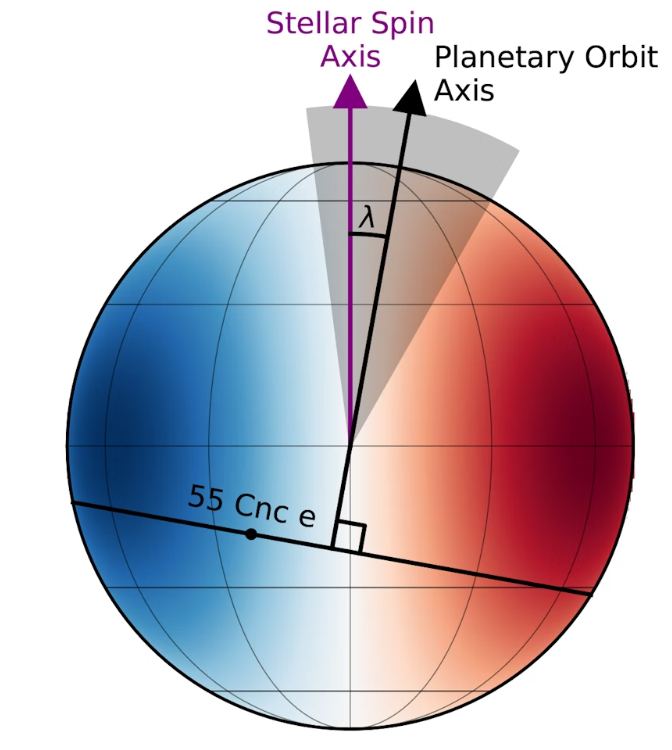
It may seem counterintuitive that astronomers use a spectrograph, which measures light, to determine a planet’s motion. But it works because of the Doppler effect. The Doppler effect explains how light moving away from us is red-shifted and light moving toward us is blue-shifted. Cancri 55 e’s host star is spinning, meaning the light from the receding side is red-shifted. Conversely, the light from the approaching side is blue-shifted.
As Cancri 55 e transits in front of the star, the EXPRES instrument at the Lowell Observatory measures the star’s light precisely. Those measurements reveal apparent, but not real, deviations in the planet’s radial velocity, and those deviations tell astronomers about the planet’s orbit and spin relative to the star’s. The authors explain it best when they write, “Capturing the resultant net red/blueshift reveals the orientation of the planet’s orbital normal vector with respect to its host star’s spin vector, that is, the sky-projected stellar spin-orbit alignment or the stellar obliquity.”
The specific effect that the team measured when the planet transits the star is the Rossiter–McLaughlin (RM) effect. Explaining that in detail would mean going down a rabbit hole, and it’s beyond the scope of this article. But the image below does shed some light on it. It’s sufficient to say that the nature of the light changes, and EXPRES can measure it precisely, more precisely than older instruments.
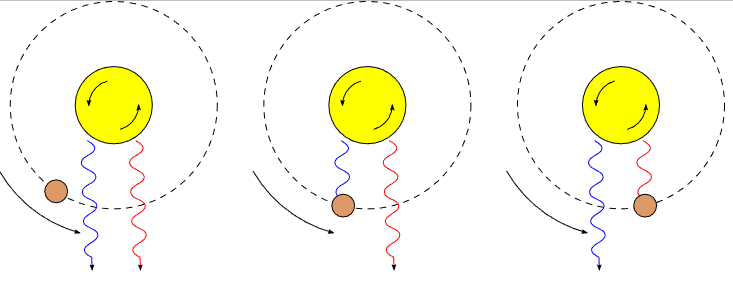
Even though the planet’s actual radial velocity doesn’t change, the measured apparent change still shows the slight gravitational change that the planet induces on the star. Without that information, it isn’t easy to piece together Cancri 55 e’s story and how it got so close to its star. Because, as we know, it cannot have formed there.
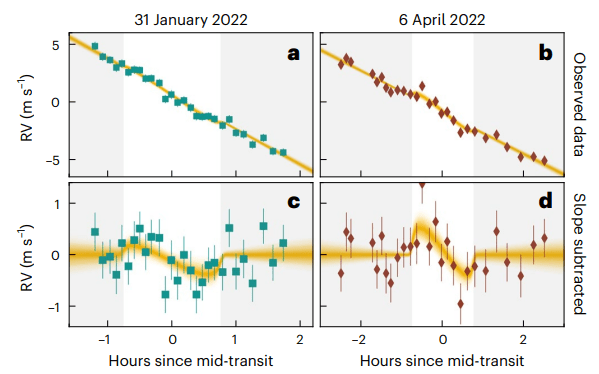
The key finding is that Cancri 55 e orbits along its star’s equator while its four siblings don’t. Remember that the Cancri 55 system is a binary system, and the small red dwarf in the binary pair is quite distant from the larger star. But it still exerts its weaker gravity on the system, which explains why all five stars likely had an orbit not precisely aligned with the larger star’s rotation. Since it’s highly likely that the planet initially had the same orbital plane as its siblings, it shows that as it migrated inward, the primary star’s gravitational force pulled the planet into alignment with the star’s equator.
As far as what led Cancri 55 e to start its migration toward the star, there could be several causes. Planets are in constant motion, and when there are five of them, they exert influence on each other which can cause planets to migrate. It’s also possible that the planet formed out of the circumstellar disk with an initial misalignment.
“We’ve learned about how this multi-planet system — one of the systems with the most planets that we’ve found — got into its current state.”
Lily Ahao, lead author, Flatiron Institute’s Center for Computational Astrophysics.
“We’ve learned about how this multiplanet system — one of the systems with the most planets that we’ve found — got into its current state,” said study lead author Lily Zhao.
While this study can’t conclude exactly what caused Cancri 55 e to get so close to its star, it’s still important. Previous measurements of its spin-orbit alignment gave contradictory results because the instruments used to measure the alignment weren’t as precise.
Several theories attempt to explain how Ultra-Short Period planets end up in hellish locations. One theory says that due to the distant red dwarf, all of the planets should be misaligned with the primary star’s rotation. Another says that secular resonance between 55 Cancri e and the other planets excited the planet’s orbital eccentricity and inclination, misaligning it with the other planets and the star. But thanks to the precise measurements possible with EXPRES, the team has narrowed it down.
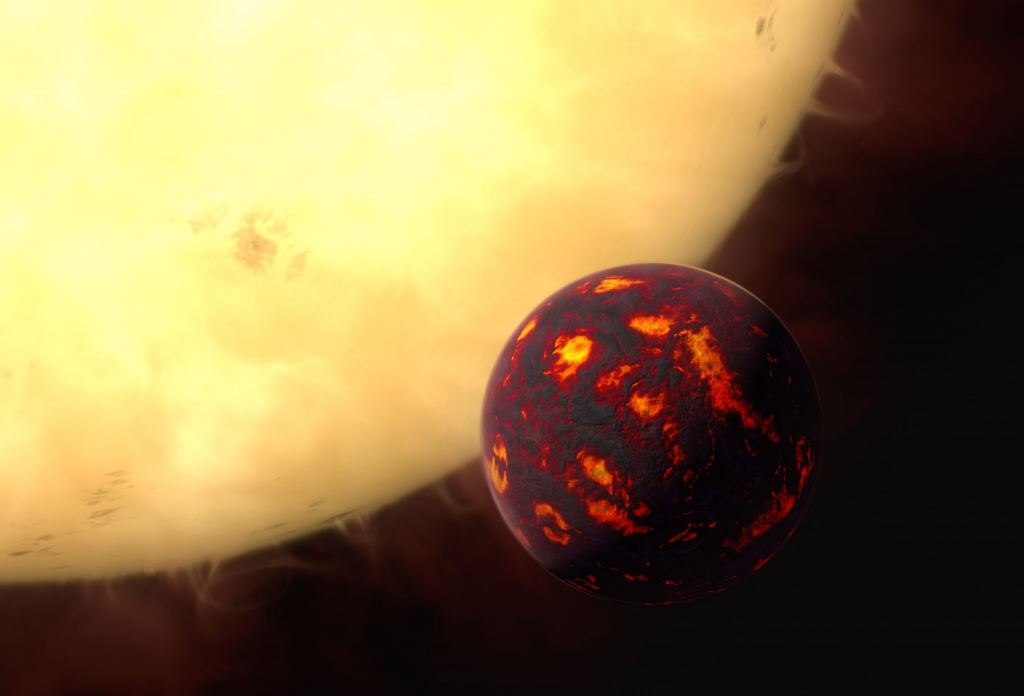
“The close alignment of the ultra-short-period, super-Earth 55 Cnc e’s orbit normal with its host star’s spin axis places constraints on theories for how USPs migrate to their present-day positions and how they interact with other planets in compact multiplanet systems,” the authors write in their conclusion. “This measurement additionally gives clues as to why none of the other known planets around 55 Cnc transit and the possible role of 55 Cnc’s distant stellar companion.”
As is usually the case, better data leads to better conclusions. In this case, the powerful EXPRES instrument helped the team understand this unusual planet better. “The EXPRES data used in this analysis have a consistent and often a higher signal-to-noise ratio (SNR), as well as lower uncertainties than the RV measurements previously used,” they write. Here they’re referring to instruments like HARPS, the High Accuracy Radial velocity Planet Searcher, another spectrometer designed to find exoplanets.
“Our precision with EXPRES today is more than 1,000 times better than what we had 25 years ago…”
Debra Fischer, senior author, National Science Foundation’s Division of Astronomical Sciences
The team concludes that the close alignment between the planet’s orbit and the host star’s axis favours one explanation over others. “The close alignment of 55 Cnc e’s orbit normal with its host star’s stellar axis preliminarily favours the low eccentricity and planetary obliquity tide models.” Low eccentricity means the planet’s orbit wasn’t completely circular but didn’t deviate much from a circle. Planetary obliquity is the angle between a planet’s orbit and its spin axis. And that’s as deep as we’re going.
Remember that this star system is 41 light-years away—an enormous distance! And even though Cancri 55 e is several times more massive than Earth, it’s still impossibly tiny from this far away. That’s why improved instruments like EXPRESS are so important in astronomy.
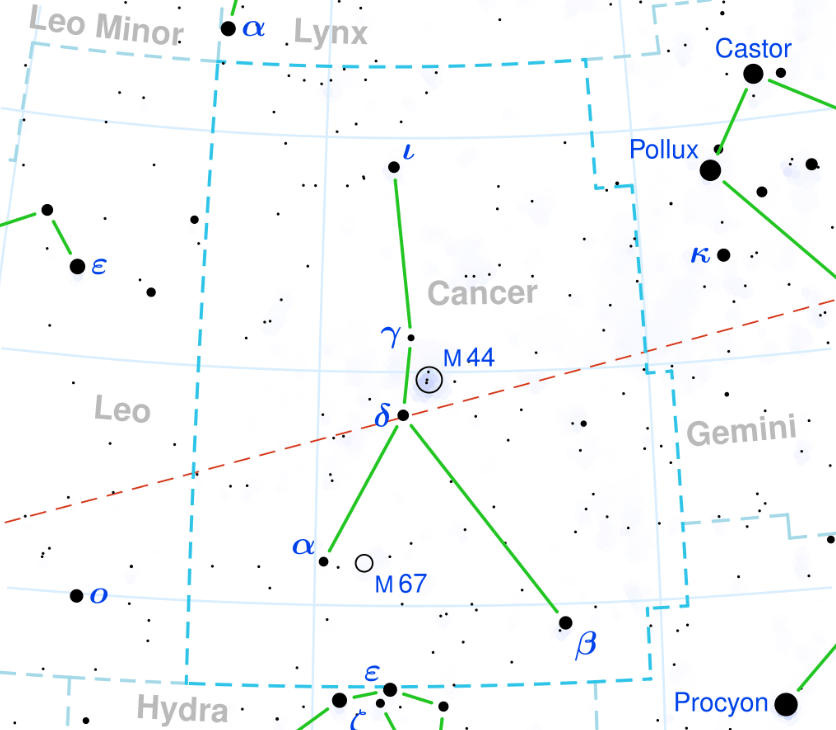
“Our precision with EXPRES today is more than 1,000 times better than what we had 25 years ago when I started working as a planet hunter,” Fischer said. “Improving measurement precision was the primary goal of my career because it allows us to detect smaller planets as we search for Earth analogs.”
EXPRES is newer than HARPS and reveals more detail in transiting exoplanets than HARPS can. And the detail is helping us understand solar system dynamics in remote systems like Cancri 55 and may eventually help explain our own Solar System’s history. “With this robust measurement using EXPRES data, we can place constraints on the different proposed dynamical histories for the 55 Cnc system.”
More:
- Press Release: How the ‘Hell Planet’ Got So Hot
- Press Release: Yale device delivers data from ‘Hell Planet,’ leads astronomers to its orbit
- Published Research: Measured spin-orbit alignment of ultra-short-period super-Earth 55 Cancri e
- Universe Today: Super-Earth Conditions Simulated in the Lab to Discover if They’re Habitable


Hi. Fascinating article. I believe there is a misstatement in the following paragraph:
“The key finding is that Cancri 55 e orbits along its star’s equator while its four siblings don’t. Remember that the Cancri 55 system is a binary system, and the small red dwarf in the binary pair is quite distant from the larger star. But it still exerts its weaker gravity on the system, which explains why all five stars likely had an orbit not precisely aligned with the larger star’s rotation. Since it’s highly likely that the planet initially had the same orbital plane as its siblings, it shows that as it migrated inward, the primary star’s gravitational force pulled the planet into alignment with the star’s equator.”
In the middle line, the phrase “…which explains why all five stars likely had an orbit…” the word “stars” should be “planets”. My apologies if I’m not correct.
CAE
Nice find! I did not know that astronomers had started to constrain the type of migrations that fit this scenario for how ultra-short-period planets (USPs) came to be.
Though I can’t say that I understand from the article the migration claim and its dynamics. The paper is fortunately clearer.
On the migration evidence: “It has been shown that USPs form a statistically distinct population of planets that tend to be misaligned with other planetary orbits in their system. This suggests that USPs experience a unique migration pathway that brings them close in to their host stars.” Warped disk scenarios could be disfavored if there is a dominant tendency. From a Bad Astronomer article observed warped disks are only about 10 % of cases: “According to Rowther, there are about 70 protoplanetary disks for which we have detailed observations and of those, at least six of them show signs of warping.” Though in this specific case the distant binary star complicates things. However, it is a wide binary, according to Wikipedia the separation to the companion is estimated to 1,065 AU.
On the dynamics, already the abstract encapsulates the proposed constrained set of pathways: “The spin–orbit alignment of 55 Cnc e favours dynamically gentle migration theories for ultra-short-period planets, namely tidal dissipation through low-eccentricity planet–planet interactions and/or planetary obliquity tides.” Tidal dissipation is a common enough mechanism.